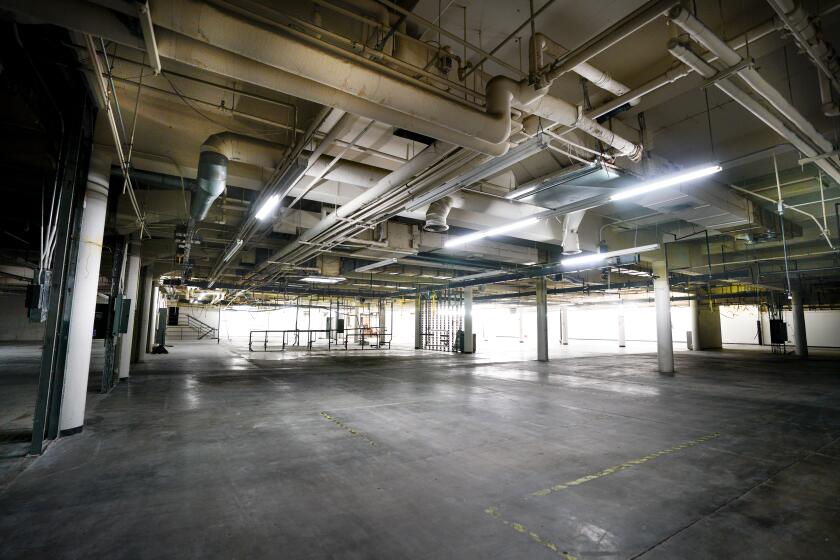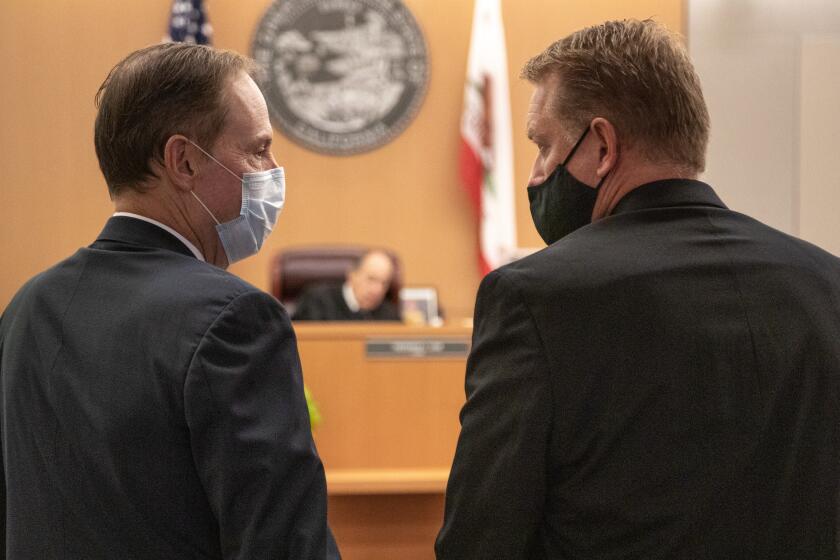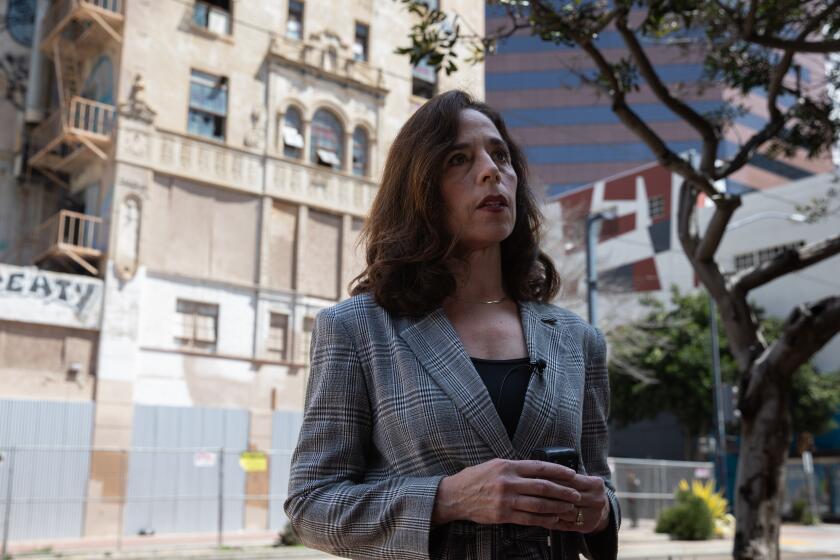Coastal Commission sued after approving repairs to San Onofre seawall
When state regulators agreed to allow an interim storage facility for millions of pounds of spent fuel at the San Onofre nuclear plant in 2015, regulators said Southern California Edison would not be permitted to beef up the seawall protecting the site from saltwater intrusion.
The barrier “shall not be extended, expanded, enlarged or replaced for purposes of protecting the development approved by this coastal development permit,” the condition stated.
In the past 15 months Edison has sought and received two administrative waivers that allowed the utility to protect the seawall from further eroding. The most recent was approved last month for what will involve an excavation and the loss of a small portion of the public beach.
According to utility documents, the seawall upgrade will cost about $950,000 and is expected to take up to eight weeks to be finished by July. Most of the work will be performed at night to reduce its impact on the public.
San Diego lawyer Michael Aguirre filed a lawsuit Thursday against the California Coastal Commission, accusing them of undermining their own rules and refusing to release emails and other communications they had with Edison regarding the seawall. His suit asks the court to order the commission to immediately release records related to the project.
“With the intent of avoiding a public hearing, SCE (Southern California Edison) and the commission embarked on a scheme to allow SCE to extend, enlarge and repair the seawall under an unlawful waiver,” said the complaint, filed in San Francisco Superior Court near the commission headquarters.
“The waiver was not placed on the commission’s public agenda,” the lawsuit added. “The public was given no fair opportunity to oppose the issuance of the waiver.”
Edison said it complied with state public notification rules. It posted a flier announcing the permit application at the south entrance of the nuclear plant and at the San Onofre State Beach guard shack.
Some commission officials declined to discuss the litigation, citing a policy of not commenting on pending lawsuits.
The commission’s senior environmental scientist, Tom Luster, who reviewed Edison’s waiver applications, said that the work does not violate conditions of the 2015 permit because the work is allowed under a separate permit the Coastal Commission approved in 1974 to develop the seawall.
“Over the years, Edison has gotten several waivers where parts of the rip rap have moved and other standard repair issues came up,” he said. “You can repair and maintain an existing structure as long as you don’t expand it.”
Edison declined to discuss the lawsuit. In an email earlier last week, utility spokesman John Dobken said the work being performed complies with all Coastal Commission permits and conditions.
“To clarify, the work we are doing is not to the seawall itself,” he wrote. “Rather, this work replaces previously-existing rip rap (or rock) that protects the seawall located at the southwest corner of the property.”
The 2,000-foot seawall is just west of the shuttered nuclear plant on the north San Diego County coast. It supports a public walkway that was closed due to erosion and deterioration. The repairs are needed to reopen the walkway and to prevent further erosion, Edison said.
Late last year, commission staff recommended that the Coastal Commission approve Edison’s application for an expanded shoreline protection system at a December meeting. But the item was pulled from the agenda after Aguirre’s client, Patricia Borchmann of Escondido, raised objections to the plan.
Borchmann said in an interview that she was alarmed to learn the project is moving forward without the benefit of a public hearing.
“I don’t think they are meeting the needs of their 2015 condition, and I don’t think they are being straight-forward,” she said of the commission. “The larger issue is the location of the nuclear waste on the beach .… I don’t think there’s anything that’s a bigger threat in southern California.”
Luster said the commission recommended the December proposal for approval because prior commission decisions would have allowed the upgrade. Edison said it withdrew that application after determining that the expanded proposal was more work than was required.
“After observing the area during winter storms, we found that the area does not receive direct impact from ocean waves and that replacing rip rap within the original footprint is sufficient to protect the area,” Dobken wrote by email.
The commission allowed the interim storage facility in 2015 after Edison announced it was closing the plant. The facility is licensed to store 3.6 millions pounds of nuclear waste for two decades, by which time Edison hopes to have moved the spent fuel to a permanent site.
To accomplish that, Edison had been transferring the waste from cooling pools into what’s called dry storage — heavy canisters that are filled with the fuel assemblies and planted in the storage facility.
That work was halted in August after a misalignment left one of the 50-ton casks wedged in its silo about 18 feet above its floor for nearly an hour. The U.S. Nuclear Regulatory Commission last week agreed to allow Edison to resume the work.
The Coastal Commission imposed the condition prohibiting any “future shoreline protection devices” because state law specifically says new developments along the coast cannot rely on new protections -- like seawalls. The idea behind the prohibition is to protect existing coastal habitats and environments.
Aguirre previously sued the Coastal Commission and Edison after regulators approved the interim storage facility.
That lawsuit survived its early court challenge and, two years ago, Edison and Aguirre announced a settlement that required the utility to make “commercially reasonable” efforts to move the nuclear waste from the beach at San Onofre.
The legal complaint filed last week accuses Edison of reneging on that agreement.
“Instead, SCE has implemented a plan to leave the nuclear waste permanently at San Onofre,” the lawsuit asserts.
Dobken said Edison remains in full compliance with the 2017 legal settlement.
“This maintenance work was needed to address deterioration of riprap materials along the walkway and at the south end of the walkway from wave action,” he wrote. “The work is not related to the settlement, nor the ISFSI” or independent spent fuel storage installation.
While Edison’s permit expires after 20 years, the utility can apply to extend the fuel storage program. The 3.6 million pounds of nuclear waste is expected to remain at San Onofre until another location is agreed to or until the federal government develops a national repository.
It is not yet clear when the San Francisco court will rule on the petition.
Get Essential San Diego, weekday mornings
Get top headlines from the Union-Tribune in your inbox weekday mornings, including top news, local, sports, business, entertainment and opinion.
You may occasionally receive promotional content from the San Diego Union-Tribune.












